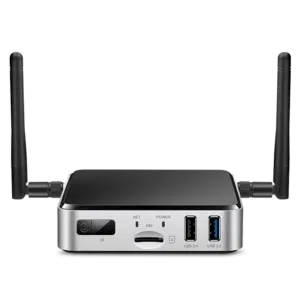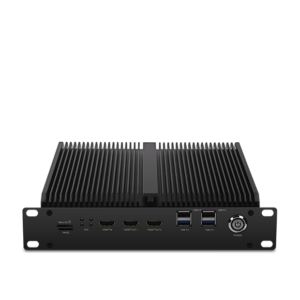AI on Edge Devices vs. Cloud AI: Benefits and Cons
AI on Edge Devices vs. Cloud AI: Benefits and Cons
Blog Article
The Influence of Running AI on Edge Devices
Real-World Programs of AI on Edge Products
Synthetic intelligence (AI) is no longer confined to the realm of big, centralized knowledge centers. As a result of improvements in engineering, side units now enjoy a vital position in deploying AI directly where knowledge is generated. But what does AI on edge products mean, and why is it producing this kind of excitement? Here, we'll explore how edge ai device works in actuality through edge devices and reveal its wide selection of sensible applications.

What is AI on Edge Products?
AI on edge products refers to deploying artificial intelligence calculations entirely on products like smartphones, cameras, drones, or IoT sensors. They do not need usage of centralized machines for control data; alternatively, they perform analysis and choices locally, making the method faster, more effective, and frequently more secure.
The "edge" here just identifies research done close to or at the source of knowledge era, in place of depending on the cloud. This change is pushed by the needs for real-time knowledge running and the need to decrease latency, increase solitude, and reduce bandwidth usage.
Essential Real-World Applications of Side AI
1. Wise Detective
AI-powered cameras designed with face acceptance, activity detection, and anomaly recognition are transforming detective systems. Edge units in this domain can analyze movie channels in real-time to identify suspicious activities, remove false alerts, and increase public safety. As an example, AI calculations can discover unusual movements and attentive authorities quickly without the need to send movie knowledge to a main host for analysis.
2. Healthcare Monitoring
Wearable products and portable medical equipment are leveraging m.2 ai accelerator for controlling wellness information more efficiently. Edge-based AI in products like wellness trackers and smartwatches screens users' vitals, such as for example heart rate, air degrees, or blood force, in real-time. These techniques analyze data domestically and give instantaneous feedback, paving the way in which for quicker treatment throughout emergencies.
Beyond wearables, advanced medical imaging devices built with on-device AI may discover signals of conditions like cancer, enabling early in the day diagnoses even yet in remote areas without internet connectivity.
3. Autonomous Cars
Self-driving vehicles are among the absolute most well-known types of edge AI in action. With receptors, cameras, and LiDAR programs providing as knowledge places, AI computations get place onboard these cars to create split-second decisions. From finding pedestrians and obstacles to navigating town streets, edge AI guarantees that the vehicle works easily and efficiently. The real-time running capability of edge units reduces the reliance on high-latency cloud techniques, ensuring safety in life-critical scenarios.
4. Retail Analytics
Side devices in retail settings are helping firms analyze customer behavior. Smart shelves and AI-equipped cameras can detect client tastes, check stock, and actually customize in-store experiences in real time. The information developed from these units helps shops produce knowledgeable choices, increase customer satisfaction, and optimize catalog management.

5. Commercial IoT
Factories and commercial crops are adopting edge AI to revolutionize their checking and automation processes. AI-powered detectors on equipment find possible faults long before they result in costly failures. Predictive preservation pushed by side AI decreases downtime, enhances production, and guarantees security on the production floor.
6. Individualized Activities in Customer Products
Your smartphone is a leading exemplory case of how edge AI personalizes consumer experiences. Features such as voice personnel, versatile camera options, and on-device language translation use real-time AI to react to user needs without sending sensitive and painful knowledge to external servers. This fosters equally convenience and solitude for the end user.
The Rising Impact of Side AI
The adoption of AI on edge units continues to rise, driven by industries' raising demand for low-latency, real-time computing, and greater knowledge privacy. Its programs are reshaping industries which range from healthcare and automotive to community safety and retail. By adding AI's energy closer to wherever information is made, edge devices aren't only improving efficiency but additionally demonstrating the countless potential of invention in the current attached world. Report this page